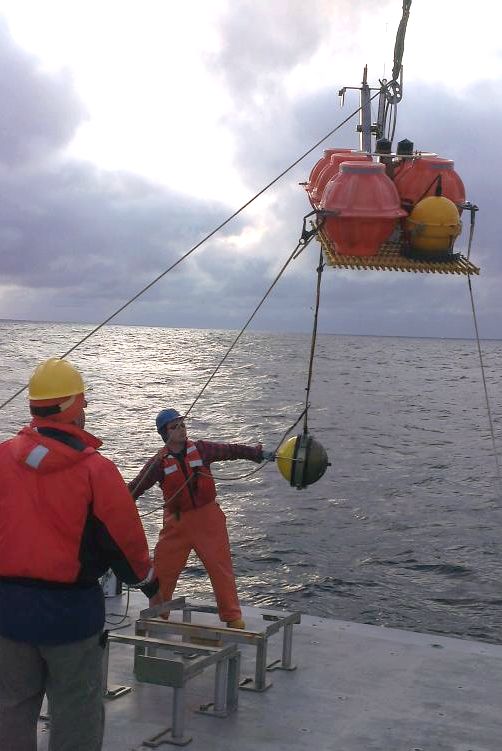Compiled by Emilie Hooft (University of Oregon) for the Cascadia Initiative Expedition Team
During the summer of 2013 the Cascadia Initiative Expedition Team led six oceanographic expeditions to recover and redeploy ocean bottom seismometers (OBSs) across the Cascadia subduction zone and Juan de Fuca plate. The Cascadia Initiative (CI) is an onshore/offshore seismic and geodetic experiment to study questions ranging from megathrust earthquakes to volcanic arc structure to the formation, deformation and hydration of the Juan de Fuca and Gorda plates with the overarching goal of understanding the entire subduction zone system. These objectives are all components of understanding the overall subduction zone system and require an array that provides high quality data, crosses the shoreline and encompasses relevant plate boundaries. The CI is the first to utilize a new generation of OBSs that are designed to withstand trawling by fisheries, thus allowing the collection of seismic data in the shallow water that overlies much of the Cascadia megathrust.

Figure 1. Cascadia Initiative experiment design: PBO GPS stations upgraded as part of the Cascadia Initiative (black triangles) and broadband seismometers (circles) expected to operate in the Cascadia Region between 2011 and 2015. The 2010 workshop report1 contains a detailed discussion of the color-coded seismometer experiments and the schedule of deployments.
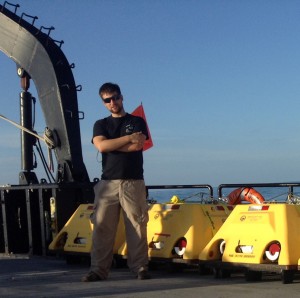
Figure 2. Robert Anthony (New Mexico Institute of Mining & Technology) counts how many SIO Abalone remain to be deployed.
The CI is a plate-scale experiment that provides a unique opportunity to study the structure and dynamics of an entire oceanic plate, from its birth at a spreading center to its subduction beneath a continental plate. Together with the land stations that are part of the amphibious array and other land networks, the OBSs will provide coverage at a density comparable to the Transportable Array of Earthscope from the volcanic arc out to the Pacific-Juan de Fuca spreading center segments.
The CI is a community experiment that provides open access to all data via the IRIS Data Management Center, thus ensuring that the scientific return from the investment of resources is maximized. The Cascadia Initiative Expedition Team (CIET) is a group of scientists who are leading the seagoing expeditions to deploy and recover OBSs and the team just completed its third year of data acquisition. The CIET maintains a website for the community where information regarding CI expeditions and OBS metadata are provided.
The CI also includes a significant education and outreach component that is providing berths for students, post-docs and other scientists to participate in either deployment or recovery legs, thus providing the seismological community with opportunities to gain valuable experience in planning and carrying out an OBS experiment. In total, 51 applicants from the US and 4 other countries applied to sail on the 2013 cruises; 21 graduate students as well as a few undergraduate students, postdocs and young scientists from the US and Canada were chosen to join the crew.
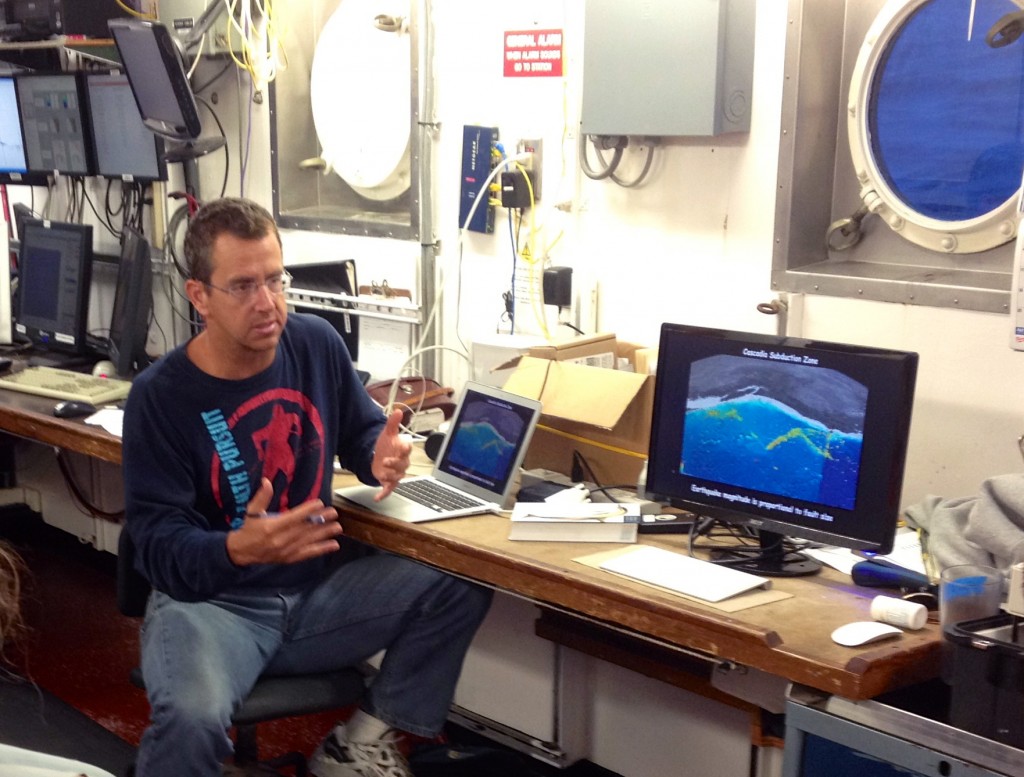
Figure 4. Tim Melbourne (Central Washington University) explains the GPS component of the Cascadia Initiative during an onboard science meeting.
The cruises lasted from 6 to 14 days in length. OBS retrievals comprised the three first legs, of which the first two were aboard the Research Vessel Oceanus. The third retrieval leg was aboard the Research Vessel Atlantis and utilized the submersible Remotely Operated Vehicle (ROV) Jason. The ROV was used to recover 12 of the 30 seismometers for this last retrieval mission. The final three legs were OBS deployments conducted with the assistance of the Research Vessel Oceanus.
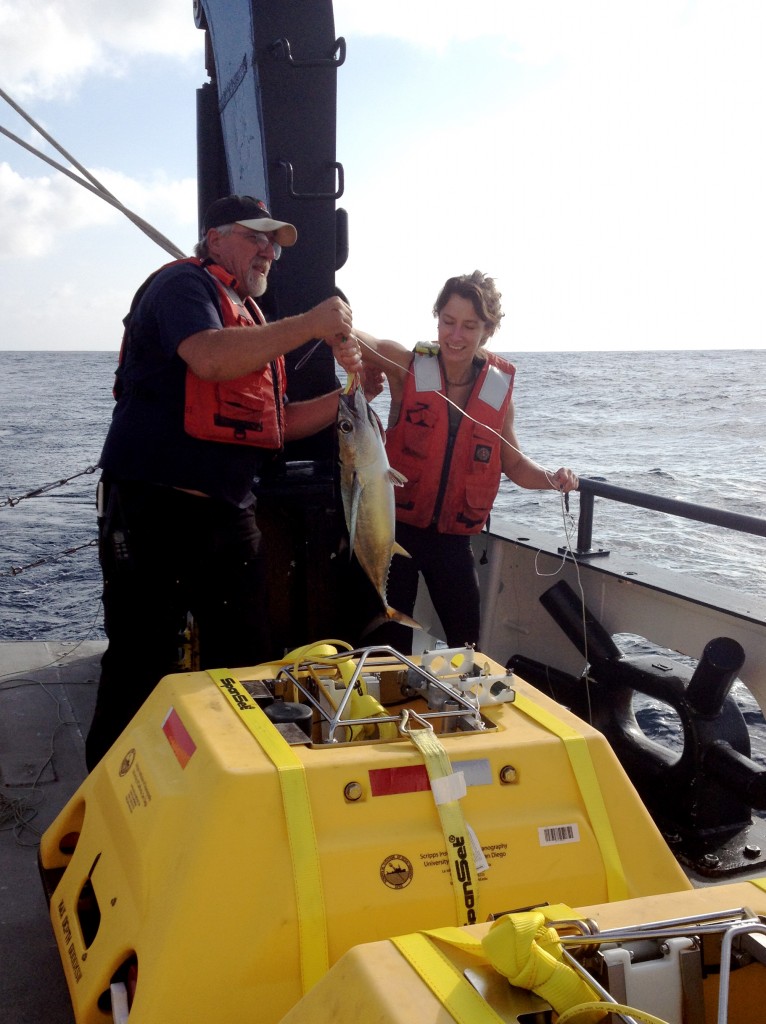
Figure 6. AB Doug Beck helps Brooklyn Gose (Undergraduate at University of Oregon) with an albacore tuna
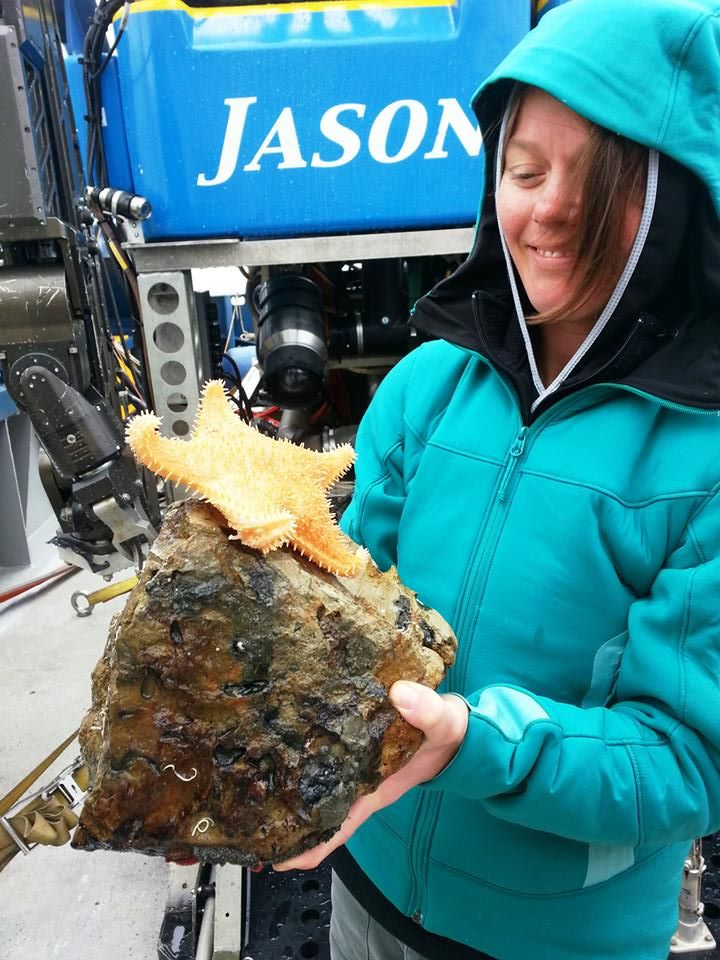
Figure 5. Samantha Bruce (Adjunct Instructor at College of Charleston) holding a starfish in front of ROV Jason.
More descriptions and pictures of individual at-sea experiences are on the CIET Website. The 21 Apply-to-Sail participants for 2013 listed in the order of cruise participation are: Hannah Mejia, California State Polytechnic University Pomona; Sara Kowalke, University of Minnesota; Stanislav Edel, New Mexico Institute of Mining and Technology; Laura Fattaruso, University of Massachusetts Amherst; Lexine Black, California State University, Northridge; Anton Ypma, Western Washington University; Samantha Bruce, College of Charleston; Katie Kirk, Cornell University & Woods Hole Oceanographic Institution; Christina King, University of Rhode Island; Ye Tian, University of Colorado at Boulder; Miles Bodmer, University of New Mexico; Robert Skoumal, Miami University; Kasey Aderhold, Boston University; Robert Anthony, New Mexico Institute of Mining and Technology; Shannon Phillips, University of Oregon; Tim Melbourne, Central Washington University; Brooklyn Gose, University of Oregon; Xiaowei Chen, Woods Hole Oceanographic Institution; Yajing Liu, McGill University; Harmony Colella, Miami University of Ohio; Martin Pratt, Washington University in St. Louis. ■
“Report from the Field” was designed to inform the community of real-time, exciting GeoPRISMS -related research. Through this report, the authors expose the excitement, trials, and opportunities to conduct fieldwork, as well as the challenges they may have experienced by deploying research activities in unique geological settings. If you would like to contribute to this series and share your experience on the field, please contact the GeoPRISMS Office at info@geoprisms.nineplanetsllc.com. This opportunity is open to anyone engaged in GeoPRISMS research, from senior researchers to undergraduate students.
We hope to hear from you!

